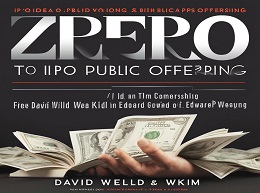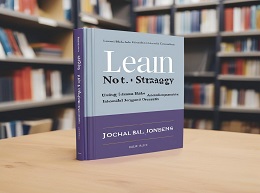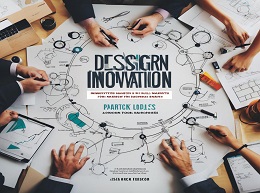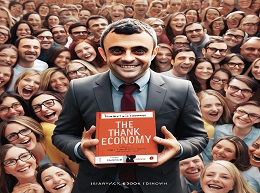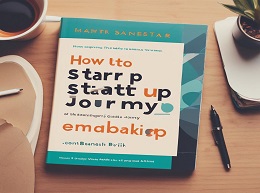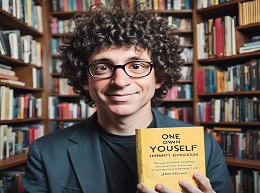Winning Through Innovation: A Practical Guide to Leading Organizational Change and Renewal
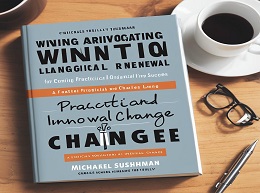
Unlock Success with "Winning Through Innovation: A Practical Guide to Leading Organizational Change and Renewal"
Innovation is the lifeblood of any thriving organization. "Winning Through Innovation: A Practical Guide to Leading Organizational Change and Renewal" by Michael Tushman and Charles O'Reilly is a comprehensive guide that offers invaluable insights into how organizations can successfully navigate the complex landscape of change and renewal. This book is essential for leaders and managers who aim to foster a culture of innovation and steer their organizations toward long-term success.
The Innovation Challenge
In today's fast-paced, ever-changing business environment, organizations must innovate or risk becoming obsolete. Tushman and O'Reilly highlight the critical need for continuous innovation as a strategic priority for any organization looking to maintain a competitive edge. They argue that innovation should not be an isolated event but a continuous process ingrained in the organizational culture.
Example: Nokia's Decline
A prime example of the failure to innovate is Nokia. Once a leader in mobile phone technology, Nokia failed to keep pace with the rapid advancements in smartphones, ultimately losing its market position to more innovative competitors like Apple and Samsung. This case underscores the importance of sustained innovation and adaptability.
The Ambidextrous Organization
One of the key concepts introduced by Tushman and O'Reilly is the "ambidextrous organization." An ambidextrous organization is capable of exploiting its existing capabilities while simultaneously exploring new opportunities. This dual focus is essential for achieving both short-term performance and long-term growth.
Practical Insight: Structural Separation
The authors suggest structural separation as a strategy to achieve ambidexterity. This involves creating separate units within the organization, each with its own processes and goals one focused on exploiting current capabilities and the other on exploring innovative opportunities. This approach allows organizations to maintain efficiency while fostering innovation.
Leadership for Innovation
Effective leadership is crucial for driving innovation. Tushman and O'Reilly emphasize the role of leaders in creating a vision for change, building a culture that supports innovation, and aligning resources to support innovative initiatives.
Example: Jeff Bezos and Amazon
Jeff Bezos' leadership at Amazon exemplifies the importance of visionary leadership in innovation. Bezos' commitment to a customer-centric approach and willingness to invest in long-term innovative projects like Amazon Web Services (AWS) and Kindle has been instrumental in Amazon's sustained growth and market dominance.
Building an Innovative Culture
Creating a culture that encourages innovation is fundamental to organizational success. Tushman and O'Reilly outline several strategies for building an innovative culture, including promoting open communication, encouraging risk-taking, and rewarding creative thinking.
Practical Insight: Google’s 20% Time Policy
Google's "20% time" policy, which allows employees to spend 20% of their time on projects of their own choosing, is a well-known example of fostering a culture of innovation. This policy has led to the development of groundbreaking products like Gmail and Google Maps.
Overcoming Resistance to Change
Resistance to change is a common barrier to innovation. The authors provide practical advice on how to overcome this resistance by involving employees in the change process, addressing their concerns, and demonstrating the benefits of innovation.
Example: IBM’s Transformation
IBM's transformation in the 1990s under CEO Lou Gerstner is a notable example of overcoming resistance to change. Gerstner involved employees at all levels in the change process, communicated a clear vision, and demonstrated the benefits of shifting from hardware to services and software, leading to IBM's successful turnaround.
Implementing Innovation Processes
Tushman and O'Reilly emphasize the importance of having structured processes for innovation. These processes should include stages for idea generation, evaluation, development, and implementation. A systematic approach ensures that innovative ideas are effectively captured and brought to fruition.
Practical Insight: Stage-Gate Process
The stage-gate process is a widely used framework for managing innovation projects. It involves dividing the innovation process into distinct stages, each separated by "gates" where decisions are made about whether to proceed to the next stage. This method helps in managing risk and allocating resources efficiently.
Leveraging Technology and Data
In the digital age, leveraging technology and data is crucial for driving innovation. The authors discuss how organizations can use data analytics, artificial intelligence, and other technologies to identify opportunities for innovation and improve decision-making.
Example: Netflix’s Data-Driven Approach
Netflix’s success in the entertainment industry is largely attributed to its data-driven approach to innovation. By analyzing viewer data, Netflix can make informed decisions about content creation and personalized recommendations, giving it a significant competitive advantage.
Apple’s Innovation Ecosystem
Apple is often cited as a paragon of innovation. Tushman and O'Reilly explore how Apple's ecosystem comprising hardware, software, and services creates a seamless user experience that drives customer loyalty and continuous innovation. Apple's ability to integrate design, technology, and user experience has set it apart as an industry leader.
3M’s Culture of Innovation
3M is another exemplary case study highlighted in the book. Known for its diverse range of products, 3M has a long-standing culture of innovation driven by its commitment to R&D and employee empowerment. The company’s policy of allocating a significant portion of revenue to research and encouraging employees to spend 15% of their time on personal projects has led to the creation of iconic products like Post-it Notes and Scotch Tape.
Sustaining Innovation for Long-Term Success
"Winning Through Innovation" by Michael Tushman and Charles O'Reilly is a must-read for leaders and managers seeking to foster a culture of innovation and lead their organizations through change and renewal. The book provides a comprehensive framework for understanding the dynamics of innovation, practical strategies for implementation, and real-world examples that illustrate the principles in action.

